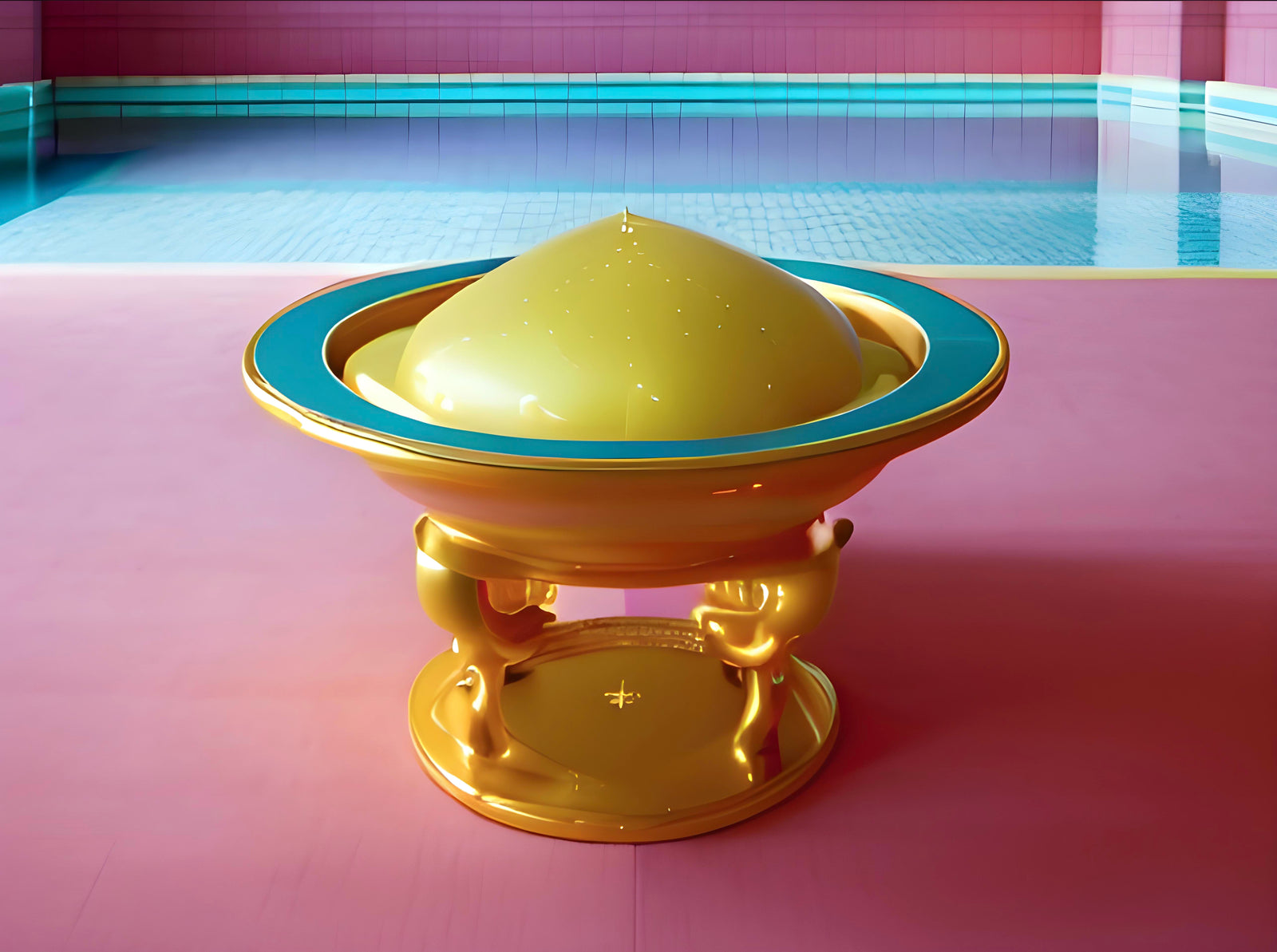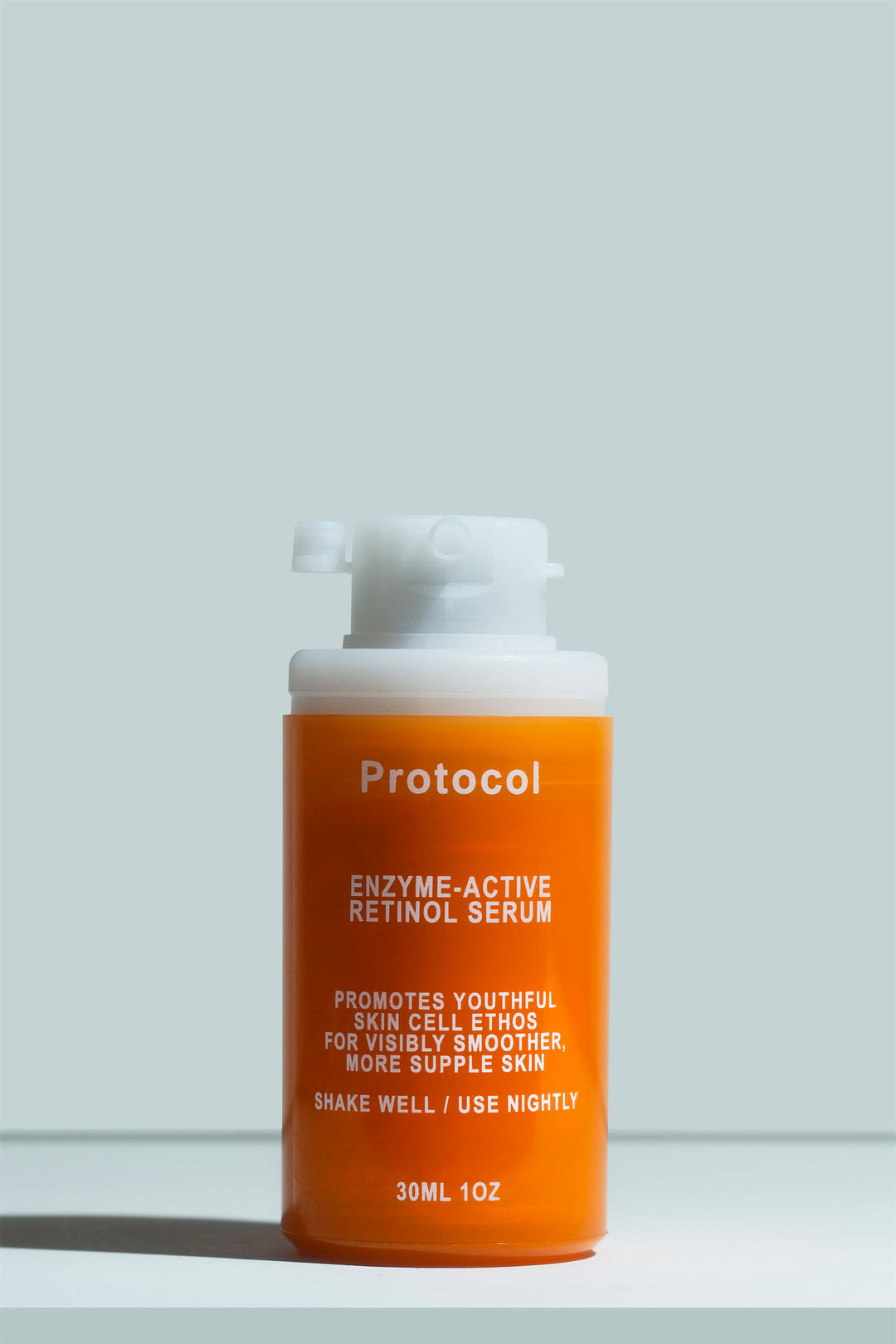Why Is Retinol Yellow?

Have you ever noticed that your budget-friendly retinol cream is a little yellow? Or, if you tried our Enzyme-Active Retinol Serum, you’ll have noticed a very vibrant orange tint.
What on earth is that color about? Simple - that’s just the color of vitamin A.
In fact, you want your retinol serum to be yellow or orange! The more noticeable the color, the more potent the product is likely to be.
But first, what’s retinol and what is it doing in skincare?
Retinol is vitamin A, an essential nutrient in our diet and a valuable ingredient in our skincare routines.
As a skincare ingredient, retinol has proven itself again and again as a potent anti-aging, clarifying, and skin-smoothing ingredient. It stimulates renewal and repair, helping to undo just about any skin concern you might have!
It has a place in routines for maturing skin, acne-prone skin, and anyone that wants smoother, more youthful-looking skin. Those with sensitive skin may want to introduce it with a little more caution, but the right formula will be beneficial without irritating.
Okay, great, but why is it yellow?
Carrots, sweet potatoes, pumpkin, and mango. What do they all have in common?
Yeah, you guessed it. They’re all orange. They’re also rich in vitamin A.
They contain vitamin A in the form of beta-carotene, a vitamin A precursor that doubles as a vibrant red-orange pigment. Lycopene, another vitamin A precursor, is more of a deep red, and it’s responsible for the color of tomatoes, watermelon, and even pink grapefruit.
Other forms of vitamin A have a similar structure and a color that’s more yellow than orange or red. As a skincare manufacturer, we buy these ingredients in powder form. The weaker retinoids, like retinyl palmitate and even retinol, look like cornflour or lemonade powder concentrate. The more potent and bioavailable retinoids, like retinal and retinoic acid, look like turmeric.
Once applied to the skin, weaker retinoids undergo enzymatic conversions to become stronger retinoids. Retinol transforms into retinal which eventually transforms into retinoic acid, the type of retinoid that the human body can use.
Quite a bit of power is lost with each one of those conversions, but retinal hits the sweet spot - it’s potent enough to rejuvenate and smooth the skin without causing irritation. The color of the serum is a signal that we use it at an effective percentage.
What to do when retinol makes my skin yellow?
Retinol is best used at night. Exposure to the sun causes it to lose some of its efficacy, so using it before bed means that it can do a better job renewing the skin.
So at night, you’ll have to endure that bit of color on your skin. Try to avoid your skincare routine immediately before bed. If you apply your retinol serum half an hour before bed, it’ll have plenty of time to sink in, and there’s less risk that it’ll rub off on your pillowcase.
For most of our clients, the tint is usually gone by morning. If you still feel like your skin looks a little orange, though, rinse your skin with cool water and the tint will disappear. Then follow it up with your morning skincare routine steps. Easy!
Embrace the tint
We know that some of our clients don’t love the yellow tint that the Enzyme-Active Retinol Serum gives their skin. When formulating skincare, the Protocol Lab Team had to balance the idea of “cosmetic elegance” with actual results.
It’s an easy gap to bridge when moisturizing ingredients feel amazing on the skin or when soothing ingredients smell incredible. When it came to retinol, it wasn’t as easy.
We wanted to use retinal, the most powerful, transformative, bioactive form of this incredible but also difficult-to-formulate ingredient. It’s quite literally the next step from retinol, with 20x the results. It also happens to be bright orange. The only way to reduce the color would have been to dilute the retinal, thereby reducing its efficacy.
So to us, that tint is a glorious reminder that the Enzyme-Active Retinol Serum is truly the freshest, most potent form of vitamin A that you can find in skincare.
If you love results as much as we do, it’s time to embrace the tint!




